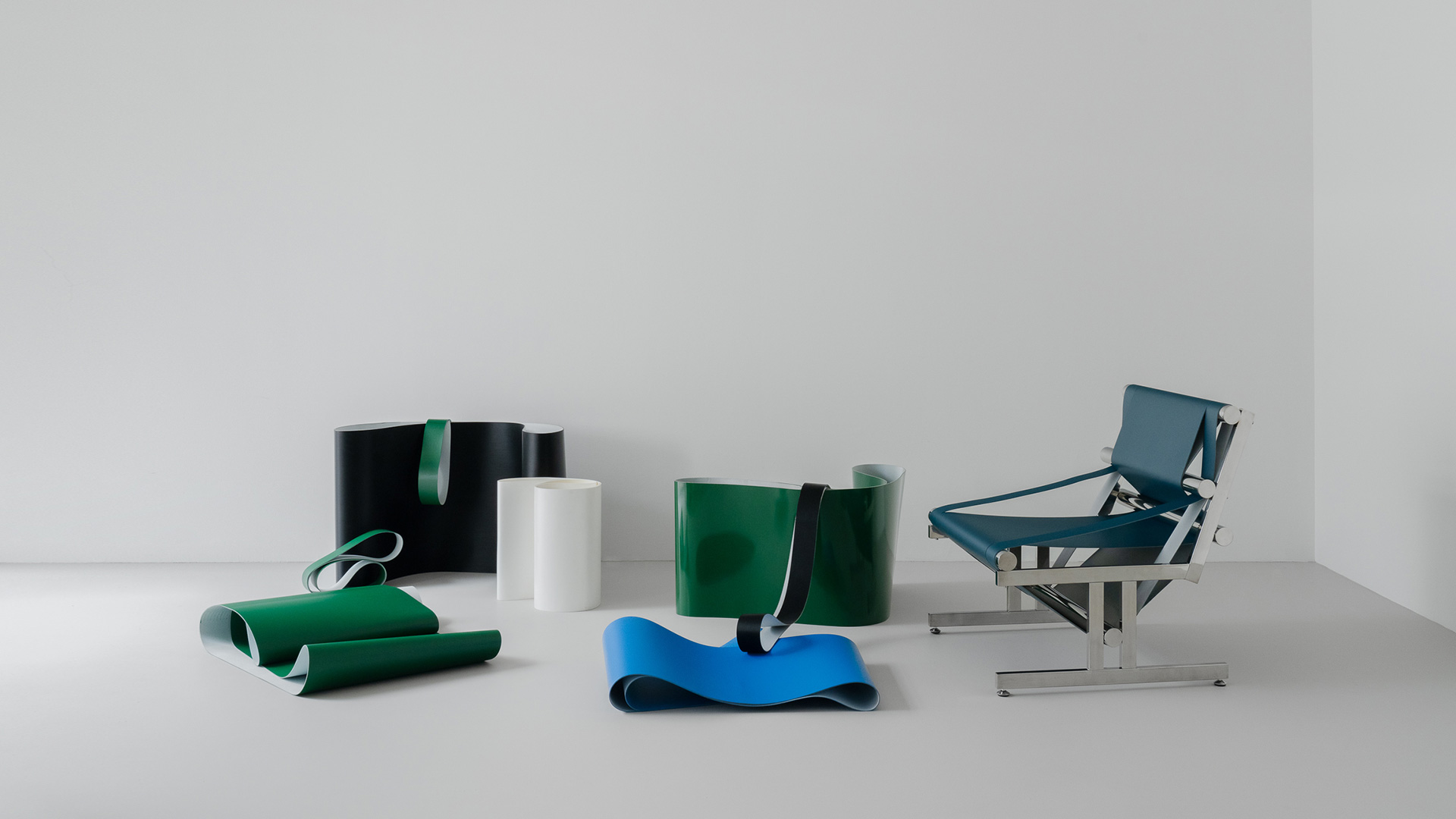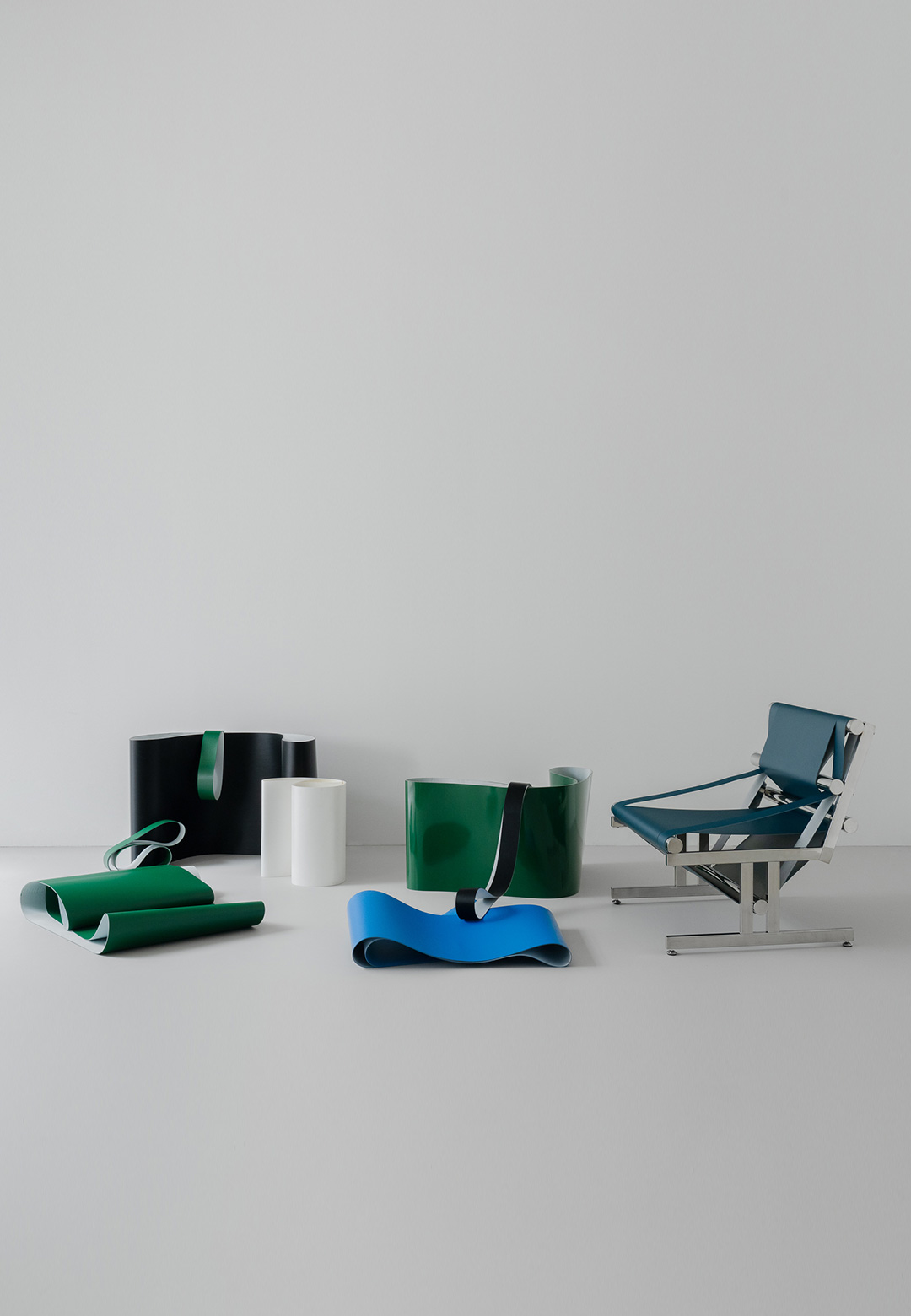Inventive thoughts, imaginative ideas, and ingenuous visions have the potential to imprint themselves on any mould, no matter their proximate association or delineation. For instance, lego blocks—viewed as toys—are often configured into sculptures, lights, and furniture. Glass, on the other hand, typically viewed as an elegant material meant for vases, vessels, chandeliers, and sculptures, can be blown over bread loaves to take the shape of the staple food—as in Uruguayan designer Bruno Baietto’s installation A Bread,A Bread,is a Bread—as an ode to the history of labour and societal differences. In the same manner, Seoul-based industrial design practice 1/plinth studio, headed by Woojin Park and Donghyun Sohn, treads the path less taken with furniture and objects built out of industrial components. Their latest venture in this arena is through the CNVYR collection, comprising chairs and magazine racks assembled out of conveyor belts.
The design studio conducts extensive research on various industrial materials and their various applications. Describing the inception of the CNVYR furniture series, Woojin Park says, “During research, I found that conveyor belts have characteristics such as high tensile strength, flexibility, various colours, and textures based on the usage they are required for. From this potential material, I started to spread my thoughts. Conveyor belts are mainly used to transport objects, but on the contrary, I thought it would be fun to place people on the conveyor belt. It would be even better if they are in a comfortable position.”
Following this incipient idea, Park wraps disassembled conveyor belts around and over polished stainless steel rods to shape usable furniture. The steel rods, acquired from repurposed machines, are configured to create modular frames that are detachable. This enables the user to experiment with the components and build chairs and shelves using different assemblage techniques. The result is a series of objects, akin in materiality but non-identical in shape, size, form, and strength. "The development from rough sketch to real thing of CNVYR series was a challenge, but it was fun," shares the product designer.
The Korean designer aims at injecting value into industrial products with his thoughtful designs. By creating objects that can be placed in both indoor and outdoor spaces and used for everyday usages, Park ensures that conversations around the innovation do not die out—something that is more plausible with creations placed in art and design galleries. This journey, however, from discovering conveyor belts to building modular objects that fulfil functional needs, was not easy for Park. “There have been many changes in appearance from prototypes to the final lounge chairs, but prototypes also still have sufficient potential to be developed. In the prototype, several types of pipes were used to study the possibility of a comfortable sitting position, and as a result, the sitting position more suitable for CNVYR was in the form of a lounge chair,” the furniture designer comments.
The CNVYR chairs and magazine racks emulate the profile of a typical conveyor belt that slides over rollers and with it, carries bags and luggages. In doing so, the pieces present themselves as an experience where people can roll and sit over the conveyor belt furniture. While the lounge chairs can be configured to include armrests, backrests of varying heights, seats of different depths, and legs of various heights, the shelves can be adapted to feature as many or as few compartments as desired. Park also plans on adding more pieces to this ongoing collection. Every indoor object, from stools to shelves, tables to room dividers, can be easily constructed using the same materials.






 Sign in with email
Sign in with email










What do you think?